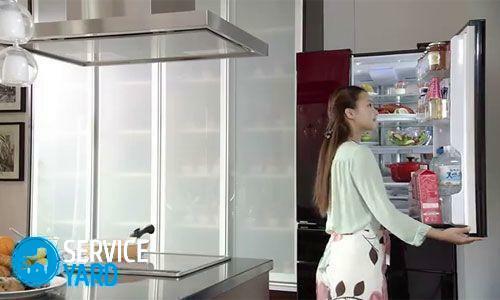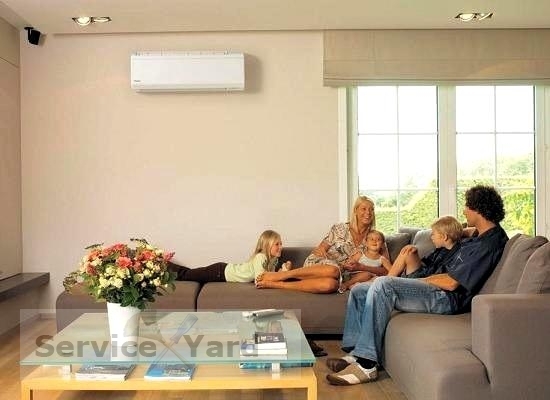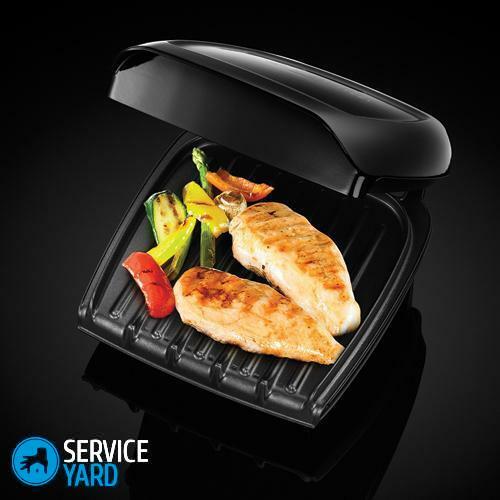Correctly determining which communications should be installed in the house, it is possible to avoid problems such as odors and sounds. If the sewage system is mounted correctly, it begins to become clogged quickly. These problems are a nuisance to owners during the operation at home and eliminate them can only conduct regular cleaning or maintenance work the system before the onset of cold weather.
Selection of the correct diameter pipes at the design stage get rid of such trouble. The most important thing - the fear that the pipeline will break, will be minimized.
The article discusses the selection of sewer pipes, the installation features, characteristics and calculation.
Selection of pipes for drainage of material
The material has a value. This characteristic affects the bandwidth, the service life of the sewer pipe and can be installed on a particular section of the system. Consider the characteristics and types of the material pipe.
metal pipes
Communications Option alloy ferrous metals. It is believed economy one pipeline.
Benefits:
- high strength;
- stable service over a wide temperature range.
Disadvantages:
- susceptibility to rust;
- significant weight.

In recent years, old metal communication systematically dismantled. Instead, they are installed pipes made of modern materials. The use of metallic communication is only suitable for the removal of liquid chemical waste at industrial sites.
Cast iron pipes
Material of higher quality due to the greater resistance to rust. The cast iron housing used communication as sewage risers and outputting external communications, reaching to the collector.
Advantages and disadvantages - the same as that of iron pipes.
Unpleasant iron feature is a roughened metal surface. As a result, the walls quickly "catch" mud and dirt. If you do not carry out periodic cleaning, in the future it may decrease the clearance.
Another drawback is the requirement in the use of special materials, which are processed by the joints. This is necessary to achieve the tightness of the system. Another obstacle is the complexity of the installation, which requires the skills of workers. Just hold your hands high quality cast iron pipe installation will not work.
Plastic pipes
Plastic is considered a modern material for sewage. It is used in the lining of internal and external communications. Their main advantage over other types of pipes - is flexibility.

Disabled whole class of flexible communication - it is determined in all types of materials that do not preserve the operational characteristics of at deformation rate of more than 3%.
Smooth polymer walls provides maximum throughput capacity among all materials. Plastic pipes do not need to be cleaned, blockages are formed only in the presence of a large amount of coarse pipe bends.
Plastic pipes are divided into three types:
- PVC or PVC - used in the sewers, where drains are moved under its own weight. Such systems are called self-flowing. They are used in the installation of internal and external communications. Resistant to sunlight, but are sensitive to sudden changes in temperature and aggressive environment. Fuel - when ignited emit toxic fumes phosgene;
- of unplasticized polyvinyl chloride (UPVC) - used in pressurized and unpressurized systems. possibility of - at a temperature of effluent to 60 ° C (permitted to rise to 100 ° C for a short period of time);
- polypropylene (PP) - long-term (up to 100 years of operation), and high strength, used in the installation of internal systems. Very soft - because this is not suitable for use in external communications;
- Polyethylene (PE) - a working temperature range from -40 to + 40 ° C. Thus, highly susceptible to deformation under linear temperature drop. Strongly recommended for diverting hot water.
High density polyethylene (HDPE)

Pros:
- long service life;
- do not rust;
- resistant to the effects of aggressive environment;
- low thermal conductivity;
- no linear deformation with increasing temperature;
- operation to -70 ° C;
- resistance to heavy loads;
- light in weight.
Minuses:
- High temperature may be used only elements XLPE (operation up to + 400 ° C);
- mechanical vulnerability;
- vulnerable to ultraviolet light.
Sewage HDPE should fully dig into the ground to avoid the risk of mechanical deformation. Used for thermal insulation of pipes.
corrugated pipes
Exclusively for external communication systems, wherein sewage elements from high strength. Corrugated pipe can be laid to a depth of 15 meters under the ground.

The walls of the corrugated tube are smooth on the inside - to provide a high permeability. Externally coated with a layer of a thick durable polyethylene, which acts as a protection element from damage communications.
Diameter: types, and which affects the
We have reviewed the materials of modern sewer elements, now turn to the main settlement characteristics of the pipeline:
- Internal diameter - repel all other parameters from it. The importance can not be overemphasized - depends on the inner diameter communicating power sewer pipe;
- Nominal diameter range - in the documentation and labeling marked Dy or DN. This rate indicates what the nominal capacity of the pipeline. Unit - millimeter rounded and its value;
- Nominal diameter - both labeled or Dn Dn;
- Outside diameter;
- The wall thickness.
Additional characteristics: weight and length
Diameter affects the weight of the pipe. It determines how many took the material for the production of one meter communications. Thus, the approximate weight per meter with a cross section of 110 mm is 1 kg. If the cross section of 160 mm, the weight increases up to 2,129 kg.
In calculating the calculated and the length of sewer elements - it varies from 1 to 6 meters. Standard - integer values in this interval.
Terms and SNIP norms for selection of sewer pipe
projected pipeline success ensures adherence to standards for communication design. These standards set snip 2.04.01085.

Rules for selecting communications sewage:
- for private household or flat enough sewer pipe diameter of 100 mm, provided a reasonable amount of plumbing devices;
- 50 mm tube will suffice for the device to the sink tap, a bidet, a bath - all sanitary device requiring draining without pressure drops (as is the case with the toilet bowl);
- it should be noted that over time, the pipeline silting, which reduces the lumen. This means an actual decrease in diameter;
- risers in buildings up to 5 stories high enough risers 100 mm in section. If the floors more - apply risers section 150 mm;
- conclusions of pipes at high altitude for a septic tank and general segments for water and sewage, which comes out a few risers, assembled from elements of 200 mm;
The advantages of plastic pipes
The peculiarity of plastic pipes that along with metal, they do not have an internal diameter. The smooth surface of the wall ensures that no dirt buildup during operation. at the right slope and the absence of irregularities within the pipe also no stagnation sand and silt.
The assortment of Plastic communication allows you to choose the product to any segment of the sewer system:
- 110 mm - suitable for taps to drain the toilet;
- 75 mm - for baths, sinks, bidets, etc.
- greater than 150 mm are used for risers;
- 300 mm - used in paving external communications.

Installation pipes of different materials
The diameter and wall thickness - a value dependent on each other. When the cross section of 150 mm wall thickness of the element is 3.9 mm. For the cross section of 110 mm, this figure is 3 mm.
This feature makes a valid installation of the combined system of iron and plastic communications using different communications section. Plastic element may have a smaller diameter value.

Dimensional Mesh pipe in millimeters and inches
Diameter pipe made of PVC, polypropylene and other polymers imported measured in inches, and is placed on the corresponding labeling elements.
Working with elements and fixtures that have markings attached to different units of measurement, there are problems. Summary - how to convert inches to millimeters, in order to properly fit the structural parts to each other.
On the accepted translation system of units, 1 inch = 25.4 mm. By analogy, the 2 inch pipe section in = 50.8 mm.

When removing the yardsticks manually ruler or tape measure value is selected to the minimum integer.
Example:
Diameter sink tube is 34 mm.
The outer diameter of the element is 1.25 inches.
Coupling is selected, starting from the first index is greater than:
34 mm = 1 ⅜ inch.
Choosing the diameter of the sewer pipe
Picking the correct section of the communication, home owners will provide for themselves a peaceful sleep without worrying about system integrity and its sufficient capacity.
Selection of a suitable caliber pipes associated with several conditions:
- standard diameter for sewer systems - 100 mm;
- the diameter of the elements for sewage in a private home is set on a stage technician and communications design;
- choice of material is based on established criteria of operation of certain articles in each section;
- is applied to the wiring member 50 mm in cross section;
- in places sharp bends used corrugated tubes which are connected to the elements of PVC special sockets, sockets with no - polymer and rubber couplings.
For each section of the system established by its rules:
- 50-100 mm - carts from the riser to the sanitary equipment;
- 100-110 mm - diameter with the communication used for the risers;
- sewage on the ground floor and in the basement and a system with complex geometry and a significant number of compounds are used in elements 110-150 mm section;
- exterior communication, which is fed to waste water sump Chambault or centralized sewage network, in cross-section should not be less extreme than the pipe exiting the structure.
Calculation of the sewer pipe diameter independently
The main parameters in the construction of a sewage system, except for the diameter, are the following:
- slope, which guarantees a good job of removing waste;
- rotations: their number, angle;
- ways to connect elements together with the armature and plumbing devices.
These indicators all indicate that the specific formulas used specialists do not act in the hands of inexperienced person. Each angle of rotation and bears the load on the system, which is reflected in the use of communications of a certain diameter.
It is best to be guided by the rules which brought experts for various sanitary equipment: toilet applicable elements of 100 mm, for devices in the kitchen and bath used communication diameter 50 mm.

Such difference values caused operational features.
Thus, the need for toilet sewer pipe of large diameter, because its job is to lump the sink large amounts of water. Additionally plays a role that is discharged not only liquid, and the presence of solids in the stream. The use of small diameter impractical - it quickly clogged and have to clean it constantly.
An additional feature is the arrangement of the air gap in the pipeline. Without it creates a vacuum, which displaces the water trap of the fingers. From this there is an unpleasant smell - no air gap he simply has nowhere to go, and he comes back into the room. A strong pressure, which arises in the pipeline, together with air makes all the unpleasant odors in the drain.
Bath is also pressing question drain a lot of water, but we are talking about water, maximum - mud and sand, with a small fraction of the waste. At the entrance to the drain should mesh that prevents large debris in the pipeline. Therefore, under the rules of the elements of a smaller cross-section used for the bathroom.
Fittings for PVC elements
Fittings for sewer networks - is an additional and mounting components, which are used for connection of polymeric components. They serve as turn signal system, separate connectors straight tubes interconnected, at the transition from one diameter to another.
Fittings are available standard sizes and configurations for plastic pipes for sewerage, each performs its function.

All kinds of fittings for sewage pipes are divided into two major groups:
- for internal communication - gray;
- threaded for external communication - a red-red color.
Ways of fittings:
- using a pad of rubber ring - is used to mount internal communications and external majority;
- using a special adhesive - is sometimes used in the installation of external communications.
On fittings installed GOST hard to eliminate possible inconsistencies in diameter and the need for additional plug.
The most popular are the diameters 22, 32, 40 mm, 50 mm, which are applied on the inner portions of the system, as well as 110 and 150 mm - and risers used for external communication.



